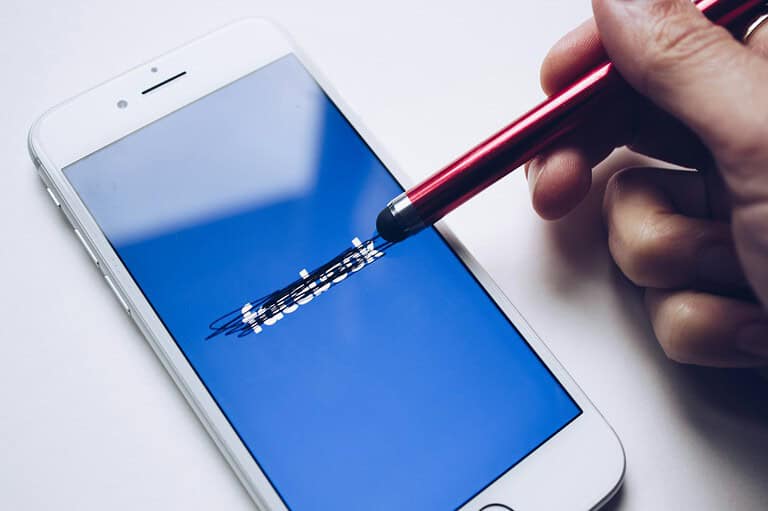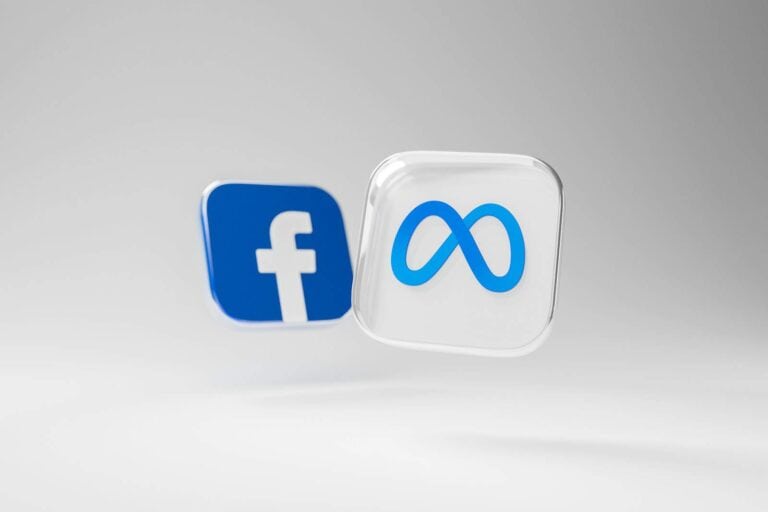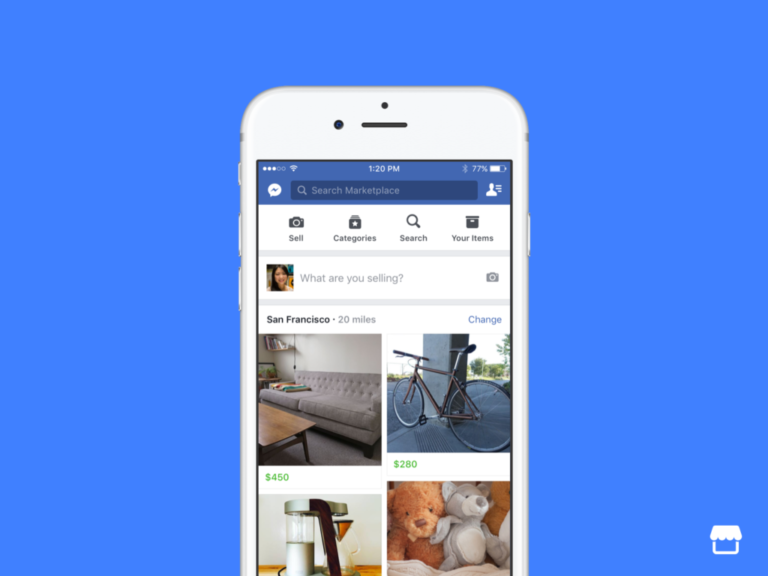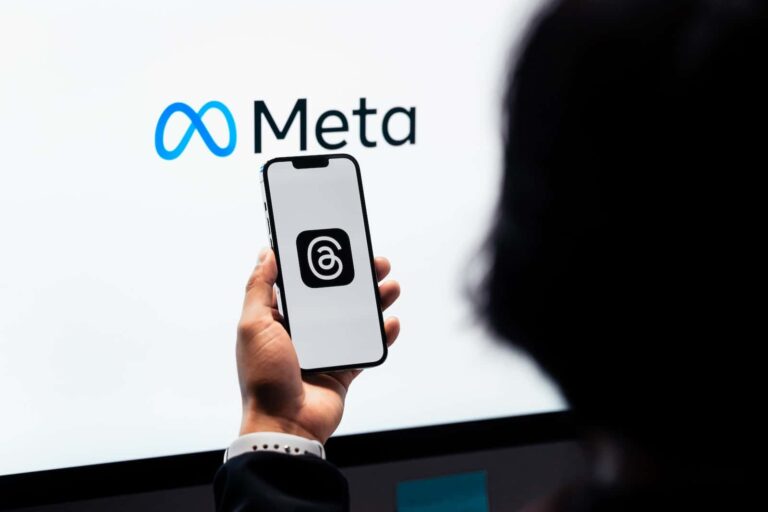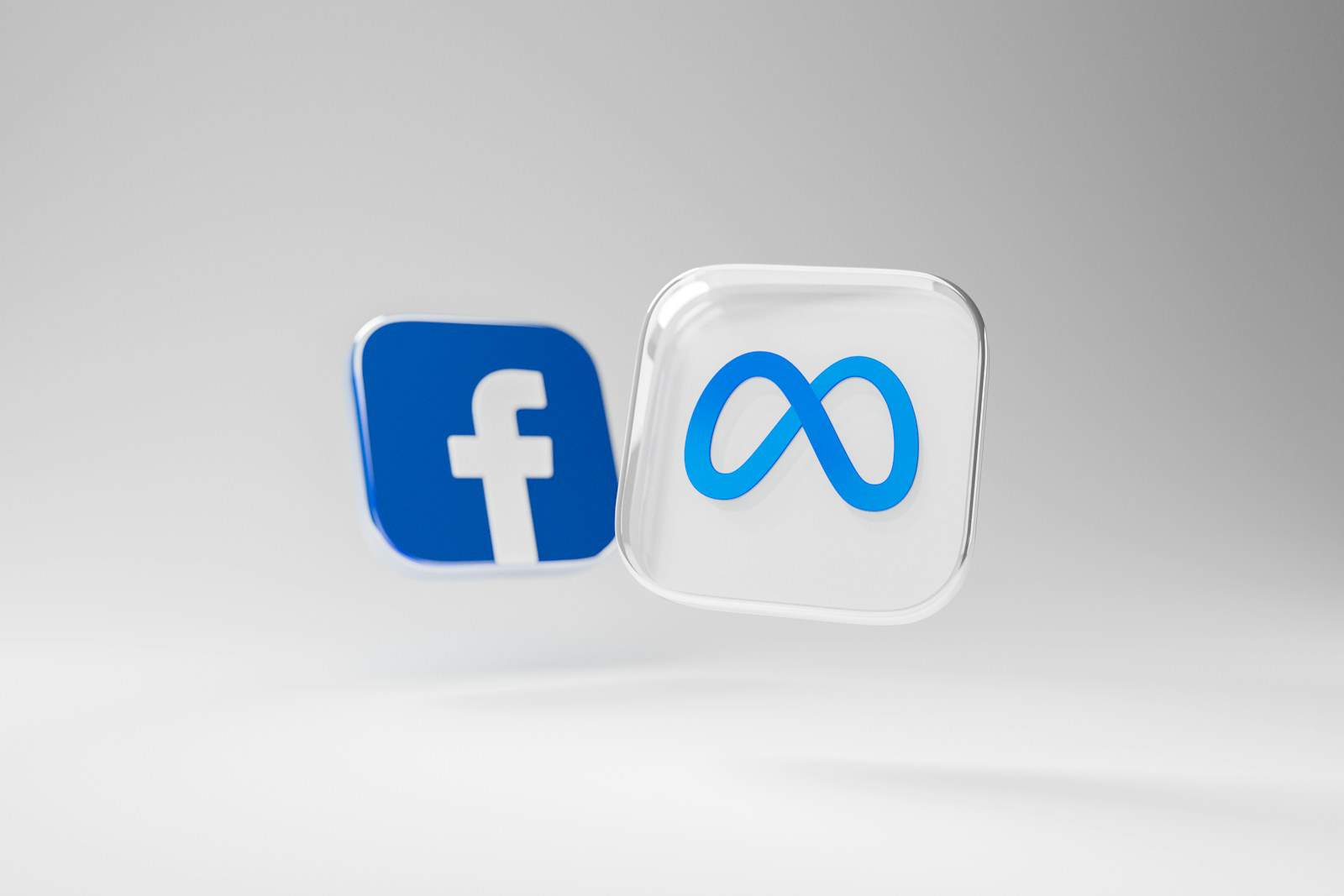
Have you ever received an email from [email protected] and wondered if it’s legitimate? Many Facebook users get these messages about password resets, login attempts, or account security updates. While [email protected] is a legitimate email domain used by Facebook to send important security notifications to users, scammers often try to impersonate it to steal your information.
Before clicking any links or taking action on these emails, it’s important to verify they’re actually from Facebook. Real Facebook security emails typically contain information that only the company would know about your account. Scammers have become increasingly sophisticated at creating emails that look authentic, including using the correct domain name in the “from” field.
1. Always Use Official Facebook Support Channels
- Help Center: Visit the Facebook Help Center for troubleshooting guides and direct links to report issues.
- Support Inbox: Check your Support Inbox (under Settings > Support Inbox) for updates on reported problems.
- In-App Help: Tap your profile picture → Help & Support → Report a Problem.
👉 Never trust random phone numbers or third-party websites claiming to be “Facebook Support.” Facebook does not offer direct phone support.
2. Protect Your Login Information
- Facebook will never ask for your password over email, chat, or phone.
- Enable two-factor authentication (2FA) in Settings > Security and Login for extra protection.
- If someone asks you to share a verification code, it’s a scam—don’t do it.
3. Verify Emails from Facebook
- Genuine Facebook emails come from addresses ending in @facebookmail.com or @support.facebook.com.
- You can double-check emails by going to Settings > Security and Login > See recent emails from Facebook.
4. Avoid Third-Party “Support Services”
Some websites or individuals claim they can recover hacked accounts for a fee. These are almost always scams. Stick to Facebook’s official recovery tools, such as:
- Find Your Account page: facebook.com/login/identify
- Hacked Account Help: facebook.com/hacked
5. Use Secure Devices and Networks
- Only contact Facebook support from a device you trust.
- Avoid using public Wi-Fi when accessing sensitive account recovery tools.
- Keep your phone and computer updated with the latest security patches.
6. Document Your Communication
- Take screenshots of your support requests and responses for future reference.
- Keep track of case numbers provided in your Support Inbox.
7. Stay Patient and Persistent
Facebook handles millions of support requests daily. If you don’t get a response right away:
- Check your Support Inbox regularly.
- Re-submit your request if it’s been several days without resolution.
Final Thoughts
Safe communication with Facebook support comes down to two things: using official channels and protecting your personal information. By following these tips, you’ll reduce the risk of scams and improve your chances of resolving account issues quickly and securely.
Key Takeaways
- [email protected] is a legitimate Facebook email address, but you should still verify emails through your account’s security settings.
- You can check if an email is actually from Facebook by viewing recent security emails in your Facebook Security and Login settings.
- Never click suspicious links in emails claiming to be from Facebook, especially those warning about password reset requests you didn’t initiate.
Understanding [email protected]
The email address [email protected] is a legitimate channel Facebook uses to send important security alerts to users. Knowing how to identify real Facebook security communications can help protect your account from potential threats.
The Role of Facebookmail.com in Security Communications
Facebook uses the domain facebookmail.com as its official email communication platform. When Facebook needs to alert you about security concerns, the address [email protected] is their primary sender.
These security emails typically include:
- Password reset requests
- Login alerts from new devices
- Security setting changes
- Two-factor authentication codes
- Account recovery information
You can verify emails you’ve received from Facebook by checking your security email history. Simply go to your Facebook account settings, then under Security and Login, look for Recent emails where all legitimate communications are listed.
Facebook will never ask for your password via email or request personal financial information through these communications.
Distinguishing Between Legitimate and Phishing Emails
While [email protected] is confirmed legitimate, scammers often create convincing imitations. Here’s how to spot real Facebook security emails:
Signs of legitimate emails:
- Sent from @facebookmail.com domain (not facebook-mail.com or similar variants)
- Address you by your actual name, not generic terms
- Link to official Facebook pages (always check the URL before clicking)
- Don’t contain urgent demands or threats
Red flags for phishing attempts:
- Multiple spelling or grammar errors
- Requests for payment information
- Threatening language about account termination
- Suspicious attachments
If you receive unexpected password reset emails you didn’t request, your account might be targeted. Change your password immediately and enable two-factor authentication for additional protection.
Safeguarding Your Facebook Account
Keeping your Facebook account secure requires multiple layers of protection. These security measures help prevent unauthorized access and protect your personal information from potential threats.
The Importance of Strong Passwords
Creating a strong password is your first line of defense against hackers. A good Facebook password should be at least 12 characters long and include a mix of uppercase letters, lowercase letters, numbers, and special symbols.
Avoid using obvious information like your birthday, name, or common words. These are easy for attackers to guess. Instead, consider using a passphrase – a string of random words that’s meaningful to you but difficult for others to guess.
Never reuse passwords across different sites. If one account gets compromised, others remain safe. Facebook recommends changing your password regularly, especially if you notice any suspicious activity on your account.
Password managers can help you create and store complex passwords securely. They generate random, strong passwords and remember them for you.
Enabling Two-Factor Authentication
Two-factor authentication (2FA) adds an extra security layer to your Facebook account. When enabled, you’ll need both your password and a secondary verification method to log in.
To set up 2FA on Facebook:
- Go to Settings & Privacy
- Select Settings
- Click on Security and Login
- Scroll to “Use two-factor authentication“
- Choose your preferred authentication method
Facebook offers several 2FA options:
- Authentication apps (like Google Authenticator)
- Text message codes
- Security keys (physical devices)
The authentication app method is considered most secure since it doesn’t rely on your phone number, which can be vulnerable to SIM swapping attacks. This protection stops hackers who might have your password from accessing your account.
Utilizing Facebook Protect
Facebook Protect provides enhanced security features for accounts that may be targeted by hackers. This program is especially important for public figures, journalists, and government officials.
When you enroll in Facebook Protect, your account undergoes a security checkup to identify and fix potential vulnerabilities. The program requires two-factor authentication and monitors for suspicious login attempts.
Facebook Protect also helps secure your account against common threats like phishing attacks. You’ll receive alerts about potential security issues and guidance on how to address them.
To check if you’re eligible for Facebook Protect, visit your Security and Login settings. If available, you’ll see an option to enroll. Following the recommended security measures significantly reduces your risk of account compromise.
Recognizing and Preventing Phishing Attempts
Phishing attacks targeting Facebook users have become increasingly sophisticated. Being able to spot these deceptive messages is crucial for protecting your personal information and maintaining account security.
Identifying Common Phishing Techniques
Phishing emails claiming to be from Facebook often create a false sense of urgency. They might claim someone is trying to reset your account or that your account has been compromised.
Look carefully at the sender’s email address. While [email protected] is a legitimate Facebook address, hackers often use similar-looking addresses with slight variations like [email protected] or [email protected].
Be wary of emails asking you to:
- Click suspicious links
- Download attachments
- Provide your password or personal information
- Act immediately to avoid account closure
Poor grammar, generic greetings (“Dear User”), and low-quality Facebook logos are other red flags that indicate a phishing attempt.
Steps to Take if You Suspect a Phishing Email
Don’t click any links in suspicious emails. Instead, manually type facebook.com into your browser and check your account’s security settings directly. Facebook includes a “Recent Emails” section where you can verify if they actually sent you any communications.
Change your password immediately if you suspect your account has been compromised. Create a strong, unique password that you don’t use on other websites.
Enable two-factor authentication (2FA) on your Facebook account for added security. This creates an additional verification step that makes it much harder for hackers to access your account.
Report suspicious emails to Facebook by forwarding them to [email protected]. This helps Facebook track and stop these attacks.
Recovery and Response to Hacking Incidents
If you suspect your Facebook account has been compromised, acting quickly can help you regain control and secure your information. Knowing the proper steps to take when facing unauthorized access is essential for protecting your digital identity.
Reacting to Unauthorized Account Access
When you discover your Facebook account has been hacked, don’t panic. First, try to log in immediately to see if you still have access. If you can get in, change your password right away through the security settings.
Look for any suspicious activity like unfamiliar posts, messages, or friend requests. Delete anything you didn’t authorize.
Check if your email or phone number associated with the account has been changed. If so, this indicates a serious breach that needs immediate attention.
Review all connected apps and remove any you don’t recognize. These could be entry points the hacker used to access your account.
Consider enabling two-factor authentication if you haven’t already. This adds an extra layer of security even if your password is compromised.
Using Recovery Codes
Facebook sends account recovery codes from the email address [email protected] when someone (hopefully you) requests access to a locked account. These emails are legitimate if you’ve requested them, but be cautious as scammers sometimes mimic these emails.
If you receive unexpected recovery codes, it may indicate someone is trying to access your account. Don’t ignore these emails, as they’re warnings of potential hacking attempts.
To use a legitimate recovery code:
- Enter the code on the Facebook recovery page
- Follow the prompts to reset your password
- Update your security questions and settings
Keep recovery codes in a secure location, never share them, and remember they’re time-sensitive. A new code will need to be generated if the current one expires.
Contacting Facebook Support
When other recovery methods fail, contacting Facebook support directly is your best option. Visit the Facebook Help Center and navigate to the “Hacked Accounts” section to begin the recovery process.
You’ll need to verify your identity, which might include providing identification documents. Be prepared to share details about when and how you lost access.
If you know the email address that was used to hack your account, include this information in your support request. This can help Facebook’s security team investigate more effectively.
Be patient but persistent. Recovery can take time, especially if the hacker has significantly changed your account information. Follow up if you don’t hear back within 48 hours.
Security Measures for Connected Applications
When using [email protected] services, it’s important to protect not just your Facebook account but also all connected applications. Securing these connections helps prevent unauthorized access across your entire Meta ecosystem.
WhatsApp and Messenger Security
WhatsApp and Messenger both offer strong security features that you should enable to protect your communications. For WhatsApp, you can enable two-factor authentication by going to Settings > Account > Two-step verification. This adds an extra PIN when registering your phone number with WhatsApp again.
For Messenger, verify your Privacy Settings by tapping your profile picture, then Privacy. Consider limiting who can contact you and who can see your active status.
Both platforms offer end-to-end encryption, but Messenger requires you to enable “Secret Conversations” manually. This ensures only you and the recipient can read messages.
You should regularly check for unauthorized devices in WhatsApp (Settings > Linked Devices) and Messenger (Settings > Account > Security and Login). Remove any devices you don’t recognize immediately.
Reviewing Third-Party App Permissions
Many third-party applications connect to your Facebook account, potentially creating security vulnerabilities. You should regularly review these permissions through your Facebook settings.
To check current permissions, go to Settings & Privacy > Settings > Apps and Websites. Here you’ll see all active connections. Remove any apps you no longer use or don’t recognize.
Be cautious when approving new app permissions. Many apps request excessive access to your data. Only grant permissions that seem necessary for the app to function.
For critical applications, enable additional security notifications. Facebook can alert you when an app tries to access your data in new ways.
Consider using the “Log in with Facebook” feature sparingly. While convenient, it creates more connection points that could be compromised. Using unique passwords for each service is often more secure.
Frequently Asked Questions
Emails from Facebook can sometimes be confusing or concerning, especially when they involve security issues. These questions address common concerns about communications from [email protected].
How can users identify legitimate Facebook security-related emails?
Legitimate Facebook security emails will always come from domains owned by Facebook, primarily facebookmail.com. Check the sender’s email address carefully for misspellings or unusual characters.
These emails typically don’t ask for personal information directly in the email. They will direct you to the official Facebook website instead.
Legitimate Facebook emails include your name as it appears on your profile. If an email addresses you generically (“Dear User”), be suspicious.
Hover over links before clicking to verify they lead to facebook.com or other official Facebook domains.
What steps should be taken if a suspicious email is received from an email address claiming to be Facebook Security?
Don’t click any links in the suspicious email. Instead, open a new browser window and go directly to Facebook.com to check your account security.
Change your password immediately if you suspect someone is attempting to access your account. Create a strong, unique password you don’t use elsewhere.
Report the suspicious email to Facebook through their Help Center. This helps Facebook track potential phishing attempts.
Check your recent account activity through Facebook’s security settings to ensure no unauthorized access has occurred.
How does Facebook communicate with users regarding account security?
Facebook primarily sends security notifications through the platform itself via notifications and the Support Inbox. Email is a secondary communication method.
When Facebook sends security emails, they typically inform you about specific account activities like password reset requests, login attempts from new devices, or security setting changes.
Facebook never asks for your password via email. They will direct you to their official site to take any necessary actions.
Are there any specific email domains that Facebook uses to send official communications?
Yes, Facebook primarily uses facebookmail.com for official communications, including [email protected] for security-related messages.
Other legitimate domains include fb.com, facebook.com, and m.facebook.com. Communications from other domains claiming to be from Facebook should be treated with caution.
Facebook-owned services like Instagram or WhatsApp use their own specific email domains for communications.
What should users do if they don’t recognize activities prompted by an email supposedly from Facebook’s security team?
Ignore any instructions in the suspicious email and don’t click on links. Instead, go directly to Facebook.com to check your account status.
Review your recent account activity in your Facebook security settings. Look for logins from unfamiliar locations or devices.
Enable login alerts so you’re notified whenever someone logs into your account from an unrecognized device.
Report the suspicious activity to Facebook through their official Help Center.
How can users ensure the security of their Facebook account when receiving account-related emails?
Enable two-factor authentication on your Facebook account. This adds an extra layer of security even if someone obtains your password.
Regularly review your security settings and connected apps. Remove access for applications you no longer use.
Update your email recovery options to ensure you can regain access if needed. Make sure your email account itself is secure with a strong password.
Be cautious of any email claiming there’s an urgent security issue. Facebook typically provides you time to address security concerns and doesn’t use high-pressure tactics.

